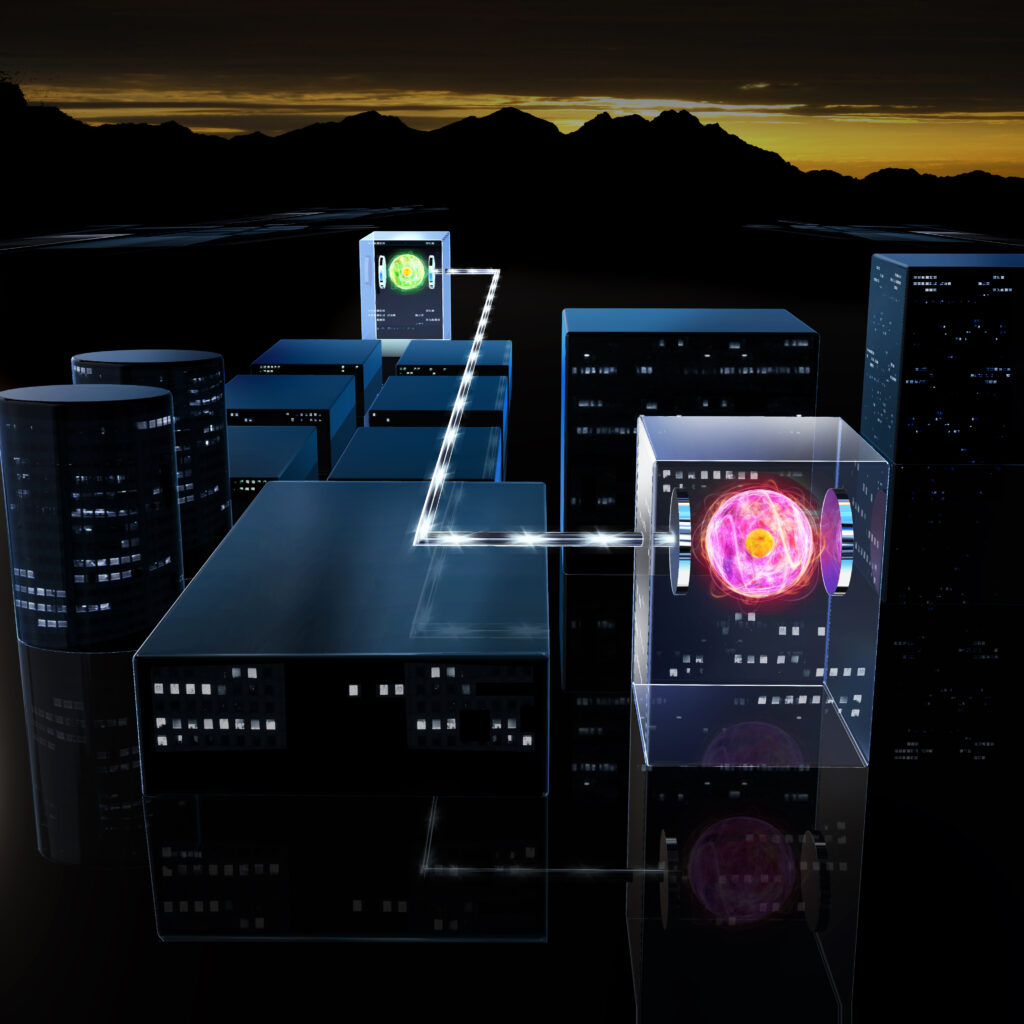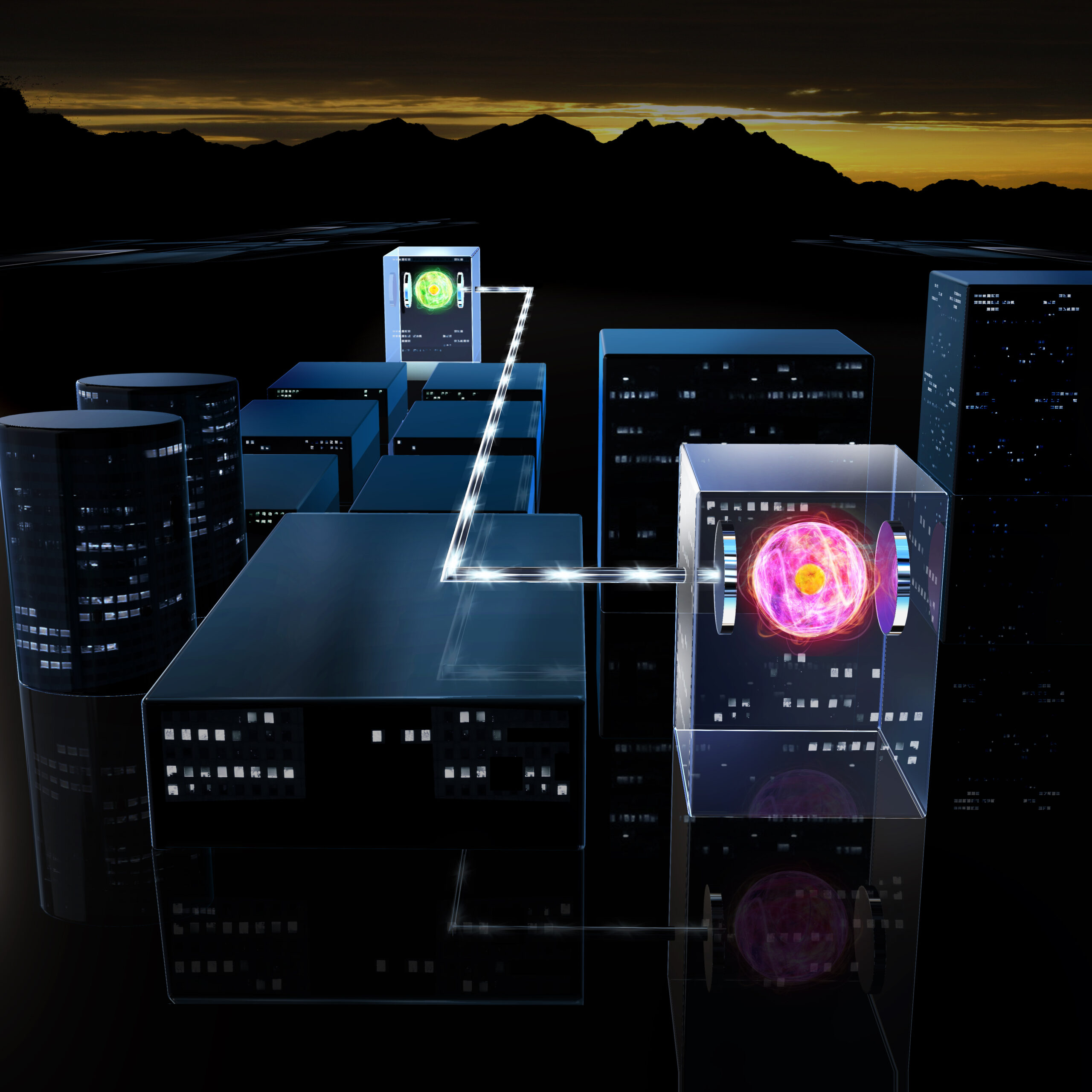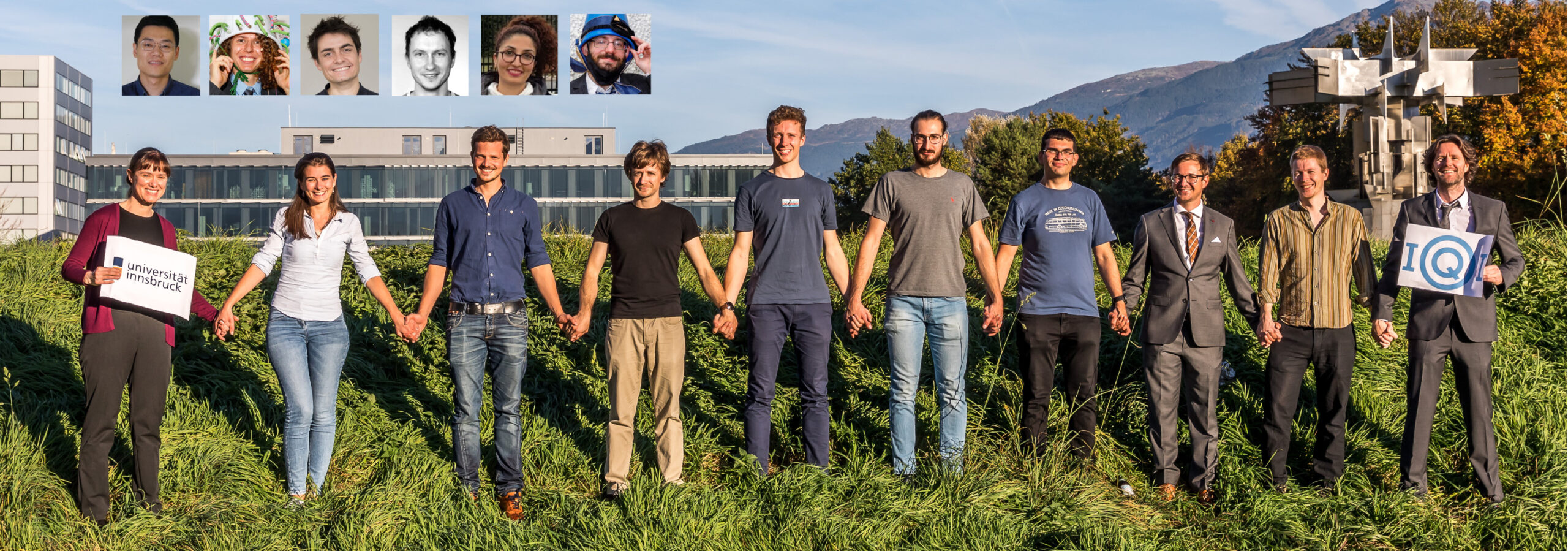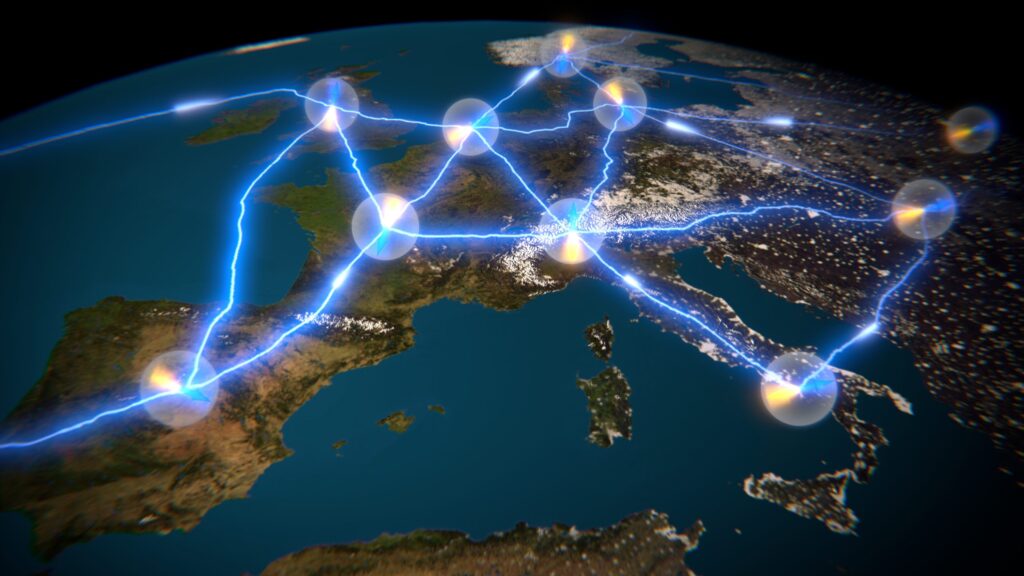06.02.2023News
QIA members in Innsbruck successfully entangle two ions 230 meters apart

Experiment indicates trapped ions as promising platform for long-distance quantum networks
Teams led by QIA members Tracy Northup and Ben Lanyon from QIA Partner University of Innsbruck have entangled two ions over a distance of 230 meters. The experiment shows that trapped ions are a promising platform for future quantum networks that span cities and eventually continents.
Trapped ions, which have previously only been entangled in one and the same laboratory, are one of the leading systems to build quantum computers and other quantum technologies. To link multiple such quantum systems, interfaces are needed through which the quantum information can be transmitted.
In recent years, researchers led by Tracy Northup and Ben Lanyon at the University of Innsbruck’s Department of Experimental Physics have developed a method for doing this by trapping atoms in optical cavities such that quantum information can be efficiently transferred to light particles. The light particles can then be sent through optical fibers to connect atoms at different locations.
Now, their teams, together with theorists led by QIA member Nicolas Sangouard of the Université Paris-Saclay, have for the first time entangled two trapped ions more than a few meters apart.
Platform for building quantum networks

The two quantum systems were set up in in two laboratories, one in the building that houses the Department of Experimental Physics and one in the building that houses the Institute of Quantum Optics and Quantum Information of the Austrian Academy of Sciences.
“Until now, trapped ions were only entangled with each other over a few meters in the same laboratory. Those results were also achieved using shared control systems and photons (light particles) with wavelengths that aren’t suitable for travelling over much longer distances,” Ben Lanyon explains.
After years of research and development, the Innsbruck physicists have now managed to entangle two ions across campus.
“To do this, we sent individual photons entangled with the ions over a 500-meter fiber optic cable and superimposed them on each other, swapping the entanglement to the two remote ions,” says Tracy Northup, describing the experiment. “Our results show that trapped ions are a promising platform for realizing future distributed networks of quantum computers, quantum sensors and atomic clocks.”

Ben Lanyon’s and Tracy Northup’s teams are part of the Quantum Internet Alliance, an international project under the European Union’s Quantum Flagship. The latest results have been published in Physical Review Letters. The research was financially supported by the Austrian Science Fund FWF and the European Union, among others.
Publication
Entanglement of trapped-ion qubits separated by 230 meters. V. Krutyanskiy, M. Galli, V. Krcmarsky, S. Baier, D. A. Fioretto, Y. Pu, A. Mazloom, P. Sekatski, M. Canteri, M. Teller, J. Schupp, J. Bate, M. Meraner, N. Sangouard, B. P. Lanyon, T. E. Northuph. Phys. Rev. Lett. 130, 050803 doi: 10.1103/PhysRevLett.130.050803
Photos and texts used on this page were provided by the University of Innsbruck.

